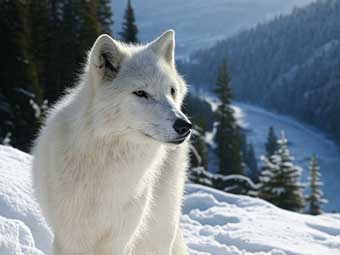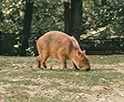Dire Wolf Comeback: Exploring Genetic Resurrection
Colossal Biosciences and the Dire Wolf: A Genetic Experiment
Reading time : 1 minute,
Discovery Chepe Id-662-ECO
Published in
04-08-2025

A recent news story has shaken the world of science and biotechnology: scientists claim to have brought back the legendary dire wolf, extinct for over 12,000 years. However, the return of this prehistoric beast is not as literal as some headlines suggest.
What is the dire wolf?
The *Aenocyon dirus*, better known as the dire wolf, was one of the most formidable predators of the Ice Age. Heavy, muscular, and with a powerful jaw, it hunted in packs and lived alongside mammoths and saber-toothed cats. Its image was popularized by series like Game of Thrones, where giant wolves accompanied the Stark family.
How did scientists "revive" it?
The company Colossal Biosciences, specialized in de-extinction, used ancient DNA recovered from fossils to identify key genes of the dire wolf. These genes were then inserted into gray wolf embryos using gene-editing tools like CRISPR. The result: genetically modified wolves with physical traits similar to the original dire wolf.
A mix of past and present
The newborn pups "named Romulus, Remus, and Khaleesi" are not clones of the dire wolf. They are a hybrid version: gray wolves enhanced with physical features of the extinct predator. In other words, a modern reconstruction based on science, but not an exact replica of the lost animal.

Is the Giant Wolf Back? The Science of De-Extinction
Is this true de-extinction?
The case has been hailed by some as the first successful example of animal de-extinction. However, other scientists argue that without complete DNA and an identical natural environment, what's been achieved is more of a genetic simulation than a true resurrection.
Impact and controversy
The experiment opens the door to reviving other extinct species, such as the woolly mammoth or the thylacine. But it also raises ethical questions: should we bring back extinct species just because we can? What impact will these "new" animals have on today's ecosystems?
What scientists have accomplished is fascinating and feels straight out of science fiction. Although these giant wolves are not exactly the same as those that once roamed North America, they represent an impressive leap in genetic engineering and the possibility of rewriting natural history.
Science is advancing rapidly, and the roar of the past may be closer than we think.
#NOTICIA: Los científicos han recuperado lobos terribles usando ADN antiguo, más de 10.000 años después de su extinción.
— Informa Cosmos (@InformaCosmos) April 7, 2025
pic.twitter.com/ODfKg5NOCv
See Also
Discovery Chepe
Most read...














